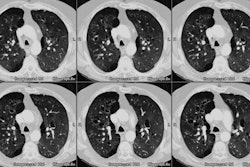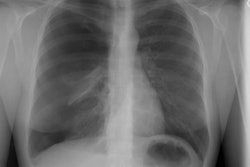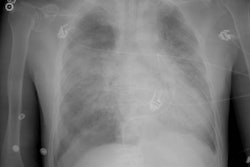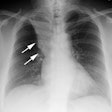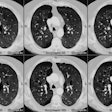Radiology 2000 Aug;216(2):472-7
Early bronchiolitis obliterans following lung transplantation: accuracy
of expiratory thin-section CT for diagnosis.
Lee ES, Gotway MB, Reddy GP, Golden JA, Keith FM, Webb WR
PURPOSE: To evaluate the accuracy of thin-section computed tomography (CT) with expiratory
scans in diagnosing early bronchiolitis obliterans after lung transplantation. MATERIALS
AND METHODS: Thin-section CT scans were reviewed by two observers blinded to the diagnoses
in seven consecutive lung transplant recipients with histopathologically proved
bronchiolitis obliterans (group A) and 21 with normal biopsy findings (group B). All
patients had normal biopsy and stable pulmonary function test (PFT) results 2-36 weeks
prior to CT. Patients with normal biopsy results were placed into subgroups based on
abnormal (group B1) or stable (group B2) PFT results. Air-trapping extent on expiratory
scans was scored on a 24-point scale. RESULTS: The mean air-trapping score in group A
(6.6) was not significantly different from that in group B (4.5, P =. 17). The
air-trapping score was significantly higher in groups A and B1 than in group B2 (6.2 and
2.6, respectively; P =.03). The frequency of an air-trapping score of 3 or more in groups
A and B1 was significantly higher than that in group B2 (P =.03). By using a score of 3 or
more to indicate air trapping, the sensitivity of expiratory CT was 74%, specificity was
67%, and accuracy was 71%. CONCLUSION: Thin-section CT, including expiratory scans, is of
limited accuracy in diagnosing early bronchiolitis obliterans after lung transplantation.
PMID: 10924572, UI: 20385461
